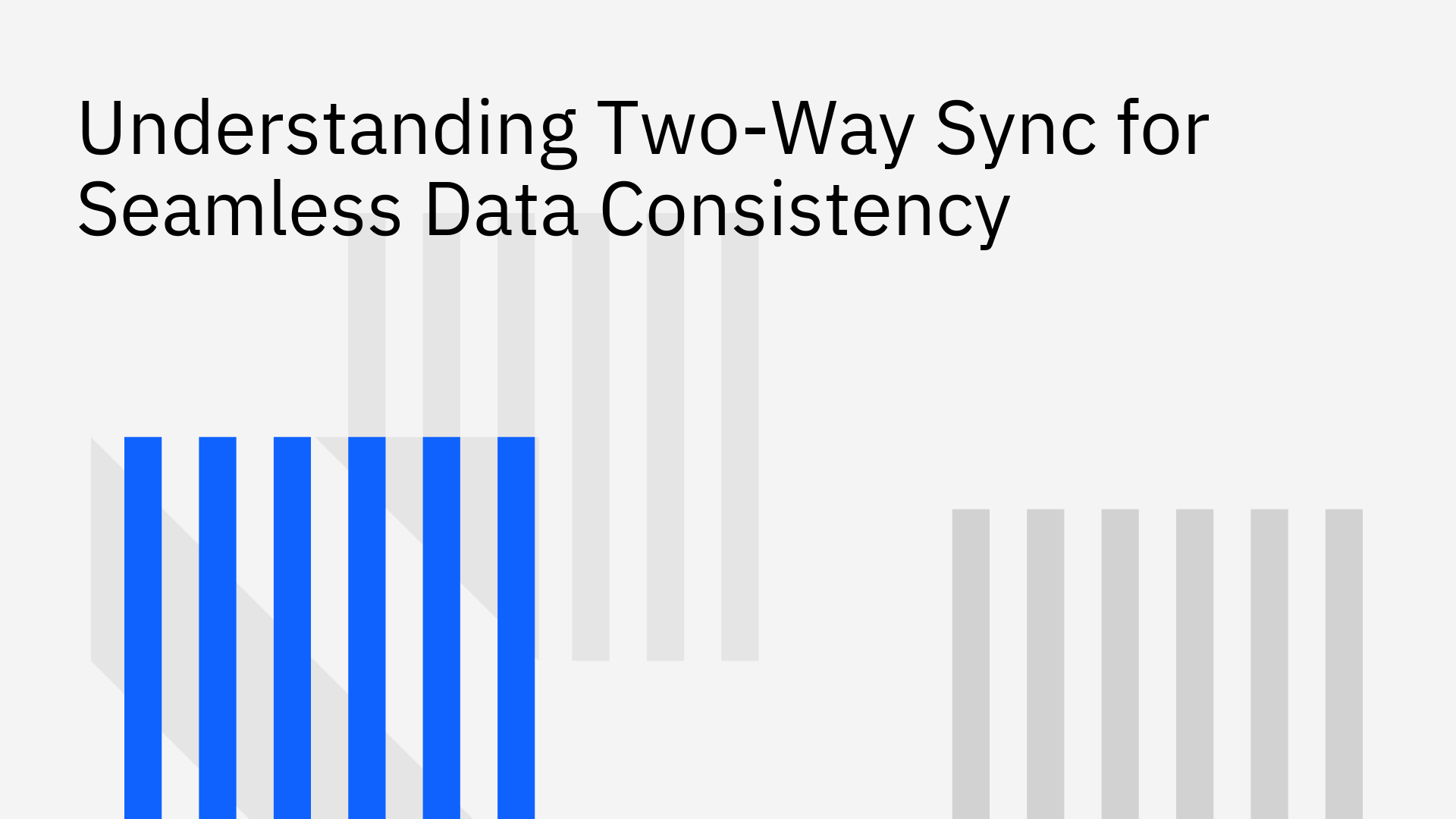
Data fragmentation is a critical technical challenge that undermines operational efficiency. In an environment where businesses rely on a diverse stack of specialized SaaS applications, data becomes trapped in isolated silos. This fragmentation across CRMs, ERPs, databases, and project management tools leads to data integrity issues, high-latency workflows, and costly manual reconciliation efforts. While generic iPaaS solutions or custom-coded scripts are often deployed to bridge these gaps, they frequently introduce their own complexities, proving to be brittle, difficult to maintain, and incapable of delivering the real-time performance required for mission-critical operations.
True bi-directional synchronization emerges as a solution engineered to guarantee data consistency across all operational systems.
Bidirectional synchronization, also known as two-way sync, is a data integration pattern that ensures two or more systems maintain an identical, mirrored dataset. When a change is made to a record in one system, the synchronization process automatically propagates that exact change to the corresponding record in the connected system, and vice-versa. This creates a single, unified source of truth that is consistent across the entire software stack [1].
For example, consider a scenario where customer data resides in a production Postgres database and is also managed by a sales team in Salesforce. With a robust two-way sync in place, if a developer updates a customer's status in the database, that change is reflected in their Salesforce record. Conversely, if a sales representative updates the contact information in Salesforce, the Postgres database is updated. This eliminates data drift and ensures all teams are operating with the most current information.
Understanding the distinction between synchronization patterns is crucial for designing an effective data architecture.
One-Way Sync (Unidirectional): In this model, data flows in a single direction from a designated "source" system to a "destination" system. Changes in the source are replicated in the destination, but any modifications made directly in the destination system are ignored and will be overwritten during the next sync cycle. This pattern is suitable for data warehousing, reporting, or simple data backup tasks where the destination is a passive recipient.
Two-Way Sync (Bidirectional): This is a more dynamic and complex pattern where both connected systems are treated as peers. There is no primary source or destination; both systems can send and receive updates. If data is newer in System A, it updates System B. If data is newer in System B, it updates System A [2]. This model is essential for interactive, operational workflows where users in different departments need to modify the same data from within their preferred applications.
A primary use case is to securely and efficiently expose production data to business teams without granting them direct database access. By establishing a real-time, bi-directional sync between a production database (like Postgres or MySQL) and an operational front-end (like Airtable, Notion, or Salesforce), non-technical teams can view and edit critical business data directly. This accelerates operations, such as managing bookings, updating inventory, or handling customer orders, while maintaining strict data governance.
To achieve a true 360-degree customer view, data must be consistent across all customer-facing platforms. Bi-directional sync is critical for integrating a CRM (e.g., Salesforce, HubSpot) with customer support platforms (e.g., Zendesk) and marketing automation tools. This ensures that sales, support, and marketing teams all have access to the same, up-to-the-minute customer information, leading to better decision-making and improved customer satisfaction [3].
Discrepancies between engineering backlogs and product roadmaps are a common source of friction. Two-way sync can connect an engineering project management tool like Jira with a product planning tool like Notion or Asana. When an engineer updates the status of a task in Jira, the product roadmap in Notion is automatically updated, providing stakeholders with real-time visibility and reducing the need for manual status meetings.
The fundamental benefit of two-way sync is the elimination of data silos and the prevention of data discrepancies. By ensuring all systems reflect the same information, businesses can trust their data, leading to more accurate reporting and more reliable decision-making. This reduces the risk of operational errors caused by teams acting on stale or conflicting information.
Automating data synchronization across platforms removes the burden of manual data entry and reconciliation. This frees up valuable engineering and operational resources to focus on strategic initiatives rather than tedious, error-prone data management tasks. The result is a more streamlined and efficient business process.
Departments should not be forced to abandon their preferred, specialized applications due to integration challenges. Bi-directional sync allows legal, sales, product, and engineering teams to use the tools that make them most effective, with the confidence that their data will flow seamlessly and consistently across the organization.
While the need for two-way sync is clear, not all solutions are created equal. Businesses must evaluate tools based on their reliability, performance, and scalability.
For organizations that cannot compromise on data integrity or performance, a purpose-built solution is often the most viable option. Stacksync is engineered specifically to solve the challenges of real-time, bi-directional data synchronization.
Unlike generic tools or brittle custom scripts, Stacksync provides a reliable, scalable, and no-code platform for ensuring data consistency. The platform is built to handle mission-critical use cases with features designed for enterprise-grade reliability:
Data fragmentation is a solvable problem. By moving beyond the limitations of generic tools and custom code, businesses can implement a robust data synchronization strategy that drives efficiency and empowers teams. Stacksync provides a platform for achieving true bi-directional sync, ensuring your data is consistent, reliable, and available in real-time across your entire technology stack.